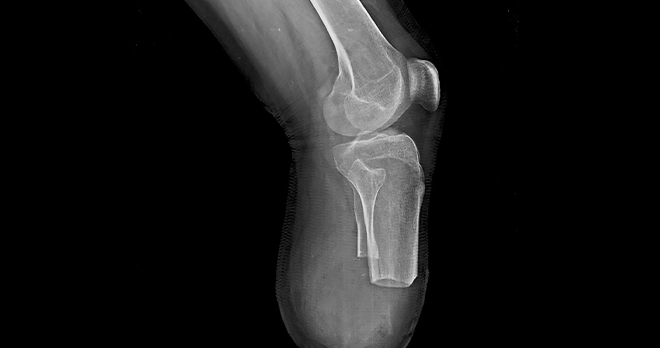Clinical Negligence and limb loss – a case example

Cathy was 69 years old when, during a routine GP appointment, she was urgently referred to hospital; the doctor noticed that Cathy had developed coldness and discolouration of her left foot, which had no pulse.
Following admission at the hospital, Cathy was seen by a consultant vascular surgeon who informed her that, after conducting some assessments, they believed she had critical ischaemia of the foot – a blockage had developed in the artery supplying her foot - and so arranged for her to have a series of investigatory scans.
The scans alarmingly revealed that Cathy’s superficial femoral arteries were blocked, however also showed that her popliteal arteries were patent, she had a patent posterior tibial artery on the left and a patent anterior tibial artery on the right.
In light of this, the following day the doctors ordered another X-ray of the Cathy’s left leg to check her blood vessels (angiogram) followed immediately by a superficial femoral artery angioplasty. However, following this procedure, Cathy’s left foot was still ischaemic, and this continued throughout and including the next day when the consultant vascular surgeon eventually decided to carry out a bypass graft from her common femoral artery (at groin level) to her peroneal artery (in the calf).
Despite the bypass graft, subsequent scanning unfortunately showed that it was unsuccessful and so as a medical emergency Cathy had to undergo an above left knee amputation.
The negligence that resulted in the amputation
Cathy brought a claim for negligence, on the grounds that:
- if she had received treatment from the hospital to an acceptable standard she would have avoided her left above knee amputation completely.
- there was an unreasonable delay by the clinicians in attempting any intervention to restore the blood supply in her left foot.
- she gave no consent for the angioplasty and this procedure, in fact, delayed the subsequent bypass graft surgery; and
- the bypass surgery itself was performed negligently in that the bypass should have been to the peroneal artery instead of the popliteal artery.
Richard Coleman of RWK Goodman was successful in establishing full liability against the hospital Trust for the negligence management of the critical ischemia with the assistance of the independent medical expert, Mr Stephen Brearley (Consultant Vascular Surgeon).
Thereafter the claim was valued with the assistance of:
- Mr S Sooriakumaran (Consultant in Rehabilitation Medicine – Quantum expert)
- Mr John Sullivan (Clinical Prosthetic Specialist – Quantum expert)
- Dr Mark Tattersall (Consultant Psychiatrist – Quantum expert)
- Ms Catherine Newcombe (Care expert – Quantum expert)
- Ms Jane Toplis (Accommodation expert – Quantum expert)
- Ms Alicia O’Brien (Occupational Therapist/Aids & Equipment expert - Quantum expert)
Cathy’s compensation
The Defendants agreed to pay the Claimant the sum of £750,000.00 in full and final settlement of Cathy’s legal claim, as a result of a range of factors:
- Prior to the life changing event Cathy used to work as a full time nurse in the healthcare sector and as a result of the disability she has been unable to return to work permanently.
- Cathy now has to pay for a commercial agency to undertake some housework and domestic tasks.
- Due to the amputation and subsequent loss of mobility, Cathy was unable to use public transport and required help and assistance when she did drive. Further she could no longer drive long distances. Cathy therefore had to rely a lot more on taxis and so we had to claim for these increased expenses together with travel costs she now has for attendance at medical appointments associated with her amputation.
- Any activity that requires the Cathy to stand and balance while working causes her great difficulty. She cannot climb up a ladder for instance and cannot kneel to reach down to lower surfaces. Therefore, we had to claim money for purchasing the necessary aids and equipment, such as a frame/walker. The kitchen and bathroom were altered to enable better access.
- Physiotherapy costs
- Costs of prosthesis equipment
Miscellaneous expenses – This included expenses such as:
- Increased telephone bills - As a result of her amputation Cathy and her husband had to make additional calls to the GP and hospitals.
- Increased utility bills – As Cathy spent more time at home more than would have been the case without the amputation.
- Discarded clothing - Cathy was unable to wear many of her pre-amputation clothing, especially her shoes. New clothing needed to be purchased.
Our specialist solicitors are here to help you when you’ve experienced limb loss due to medical negligence. Contact our enquiries team to find out if we can help you.
Call now
More insights from our team
View more articles related to Amputation, Medical negligence and Team Around the Client





